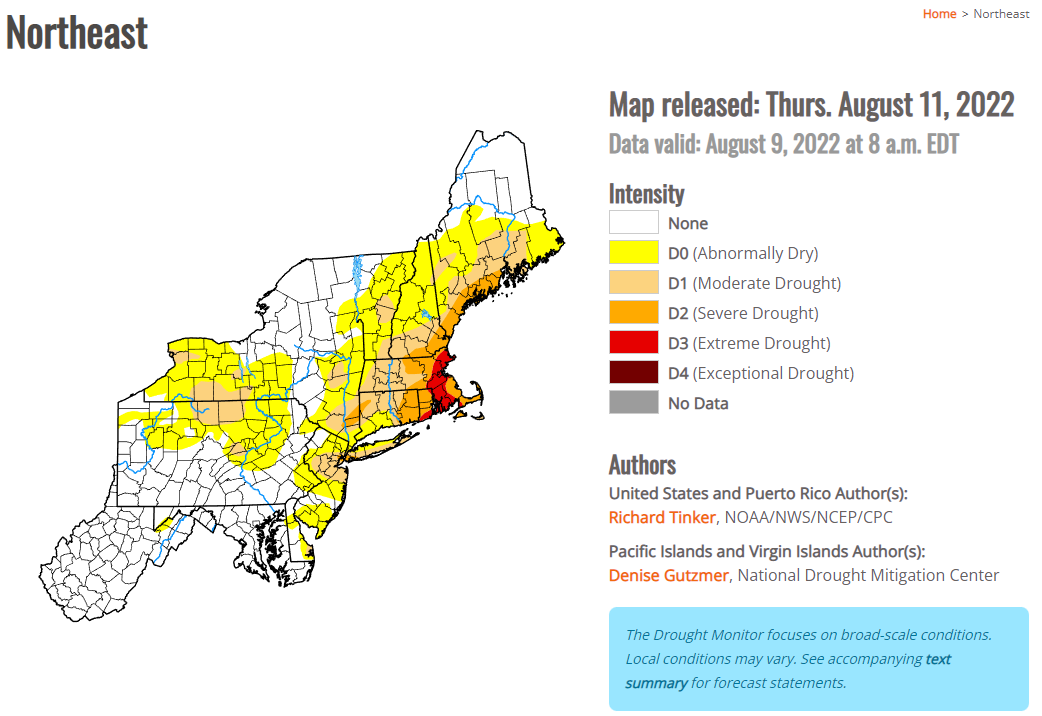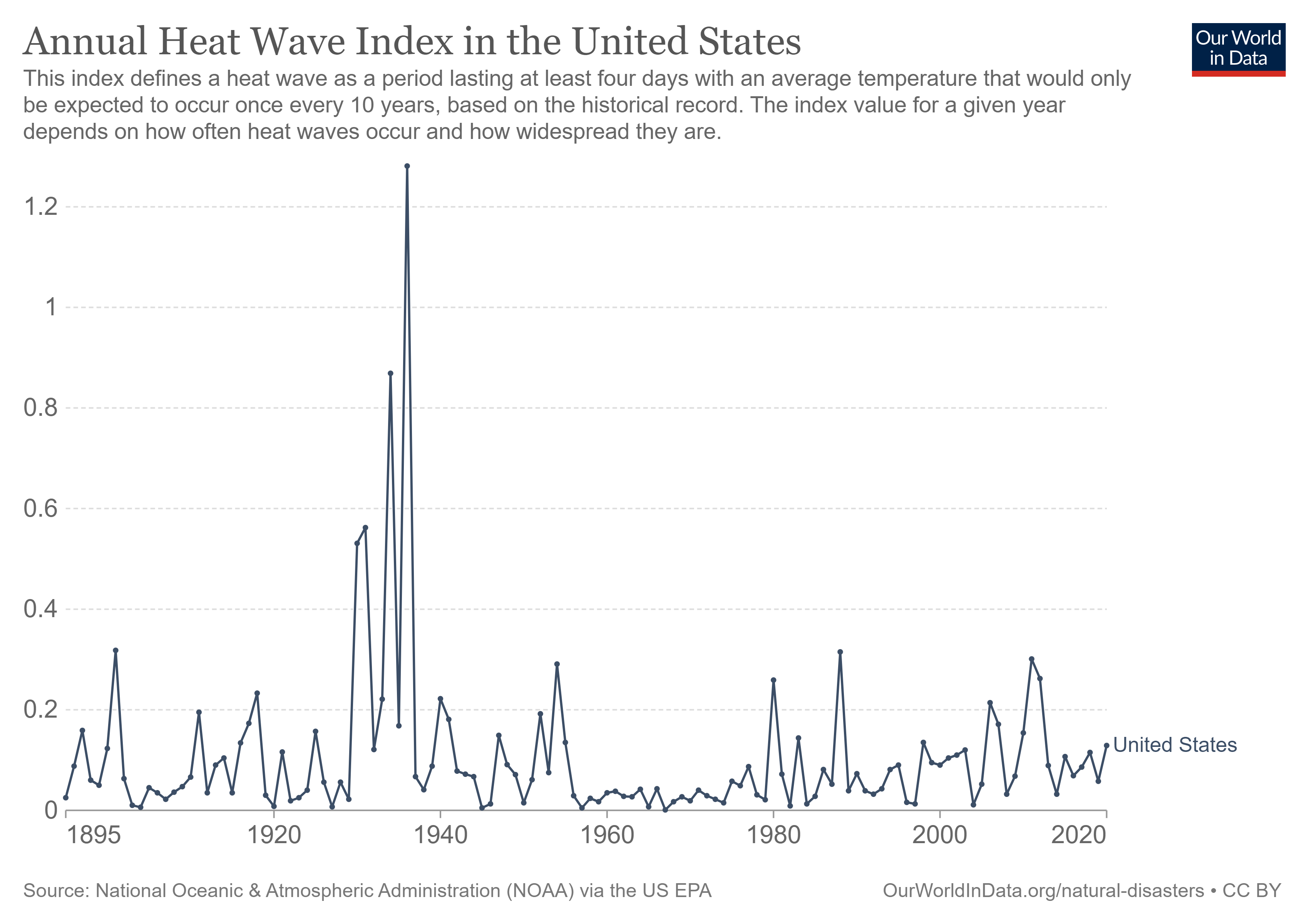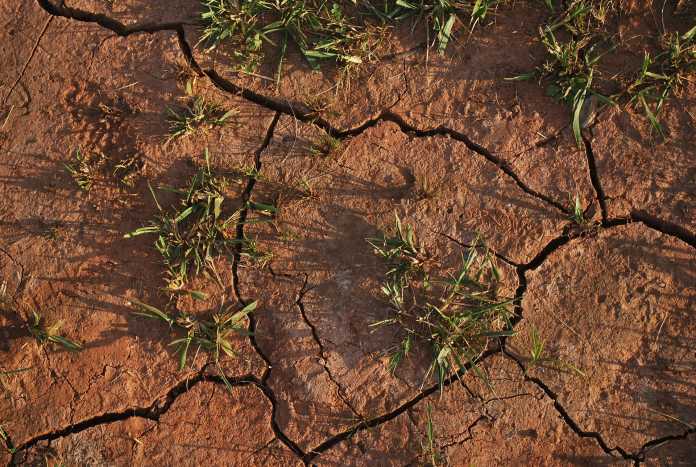An Associated Press (AP) story picked up by Yahoo News claims that climate change is causing a trend towards hotter, drier summers and drought in the Northeastern United States. This is false. There is no evidence drought in recent years is historically unusual.
The article, by AP reporter Jennifer McDermott, titled, “Northeastern farmers face new challenges with severe drought,” calls the very recent below average rainfall in the Northeastern United States this summer an extreme weather event.
“But this summer has brought another extreme: a severe drought that is making lawns crispy and has farmers begging for steady rain,” McDermott writes. “The heavy, short rainfall brought by the occasional thunderstorm tends to run off, not soak into the ground.”
McDermott interviews activist/scientist Michael Mann, to make the connection between climate change and the drought parts of the Northeast has been experiencing recently.
McDermott writes:
The continuing trend toward drier summers in the Northeast can certainly be attributed to the impact of climate change, since warmer temperatures lead to greater evaporation and drying of soils, climate scientist Michael Mann said. But, he said, the dry weather can be punctuated by extreme rainfall events since a warmer atmosphere holds more moisture — when conditions are conducive to rainfall, there’s more of it in short bursts.
Mann is not an honest broker. Climate Realism has repeatedly exposed his attempts to ignore or cover-up data that tends to undermine the narrative that the world faces a climate crisis, here and here, for example.
Droughts are normal weather patterns, especially in the late summer months.
Climate Realism has covered the data and evidence of drought throughout the history of the United States, which show that climate change is not making drought more severe or frequent here, here, and here.
According to data from The U.S. Drought Monitor (USDM), approximately 19 percent of the Northeastern United States is experiencing and degree of drought, with just 1.15 percent experiencing extreme drought. None of the region is experiencing the highest category of drought, “exceptional drought.” (See the figure below). This drought is not a long-term event. Data from the USDM show only 1.26 percent of the entire Northeast region was experiencing any level of drought just 3 months ago, and that was moderate drought.

Most claims of increasing drought or heatwaves come from cherry picked data and “end-point fallacy,” where time periods of historic data are constrained to those that support the narrative. It is a sort of lie by omission – because when the full extent of U.S. heat wave index data is looked at, which goes back to the 1890s, it is clear that the 1930s had much worse heat waves than today. (See below)

Drought.gov’s Drought Early Warning System (DEWS) reports that the Northeast region often experiences what are called “flash droughts,” which are “short-term intense dry periods that can follow a period of normal to above-normal precipitation” that can last 2 to 6 months. Only time will tell whether the current drought is anything more than a flash drought.
To understand drought trends for the region, it is instructive to dive into the drought history of individual states in the Northeastern region. Rhode Island, for example, which receives particular attention in the AP article, is among the states suffering the most under the current drought, with approximately 66 percent of the state suffering severe drought, and the remaining 34 percent in extreme drought. Yet the present drought is not that severe or unusual in historical terms.
Data from the Historical Drought Conditions archives show that Rhode Island’s most severe droughts occurred in the 1960s and before, when the U.S. was cooler than today. Rhode Island’s most severe drought since the records began in 1895 was in 1965, during a period when the earth was cooling. Data demonstrate many droughts before 1965 were more severe and extended than the present one. (See the image below)
If any trend can be gleaned from the data covering Rhode Island’s drought/rainfall history, it is a trend towards fewer, less severe droughts, and, in general, more consistent rainfall.

Somehow the AP and Mann missed this fact.
The data does not support the claims made by Michael Mann and parroted by the AP and Yahoo News that climate change is making drought more frequent or severe in the Northeast. This is just one more instance of alarmists shamefully mispresenting a short-term weather event, as a sign of long-term climate change. The two are not the same and research indicates droughts are becoming less frequent and severe in the Northeast and in almost every region of the United States.

















